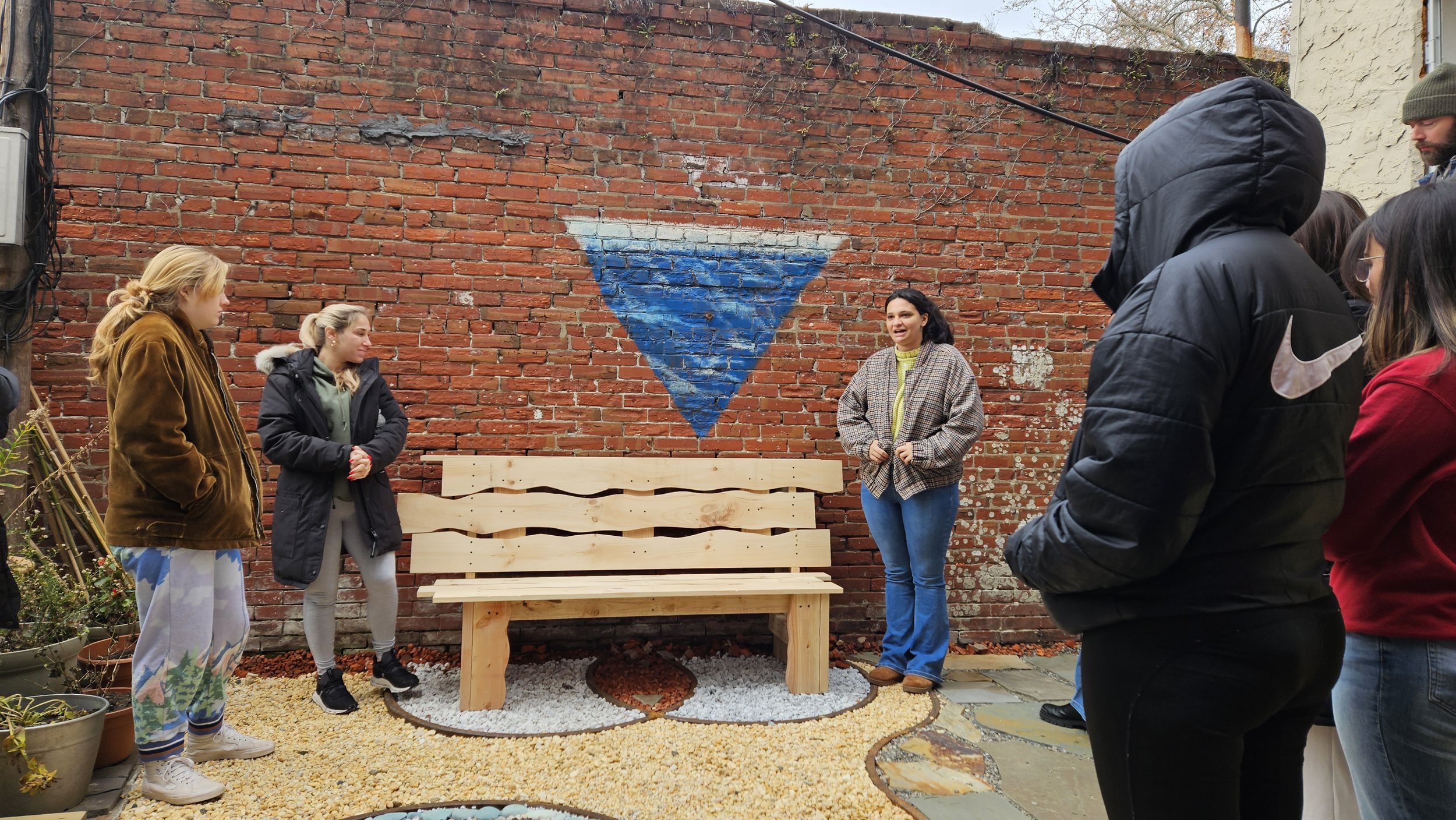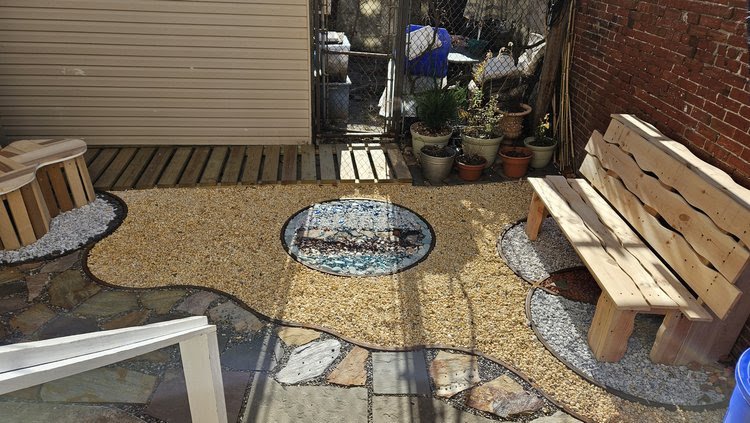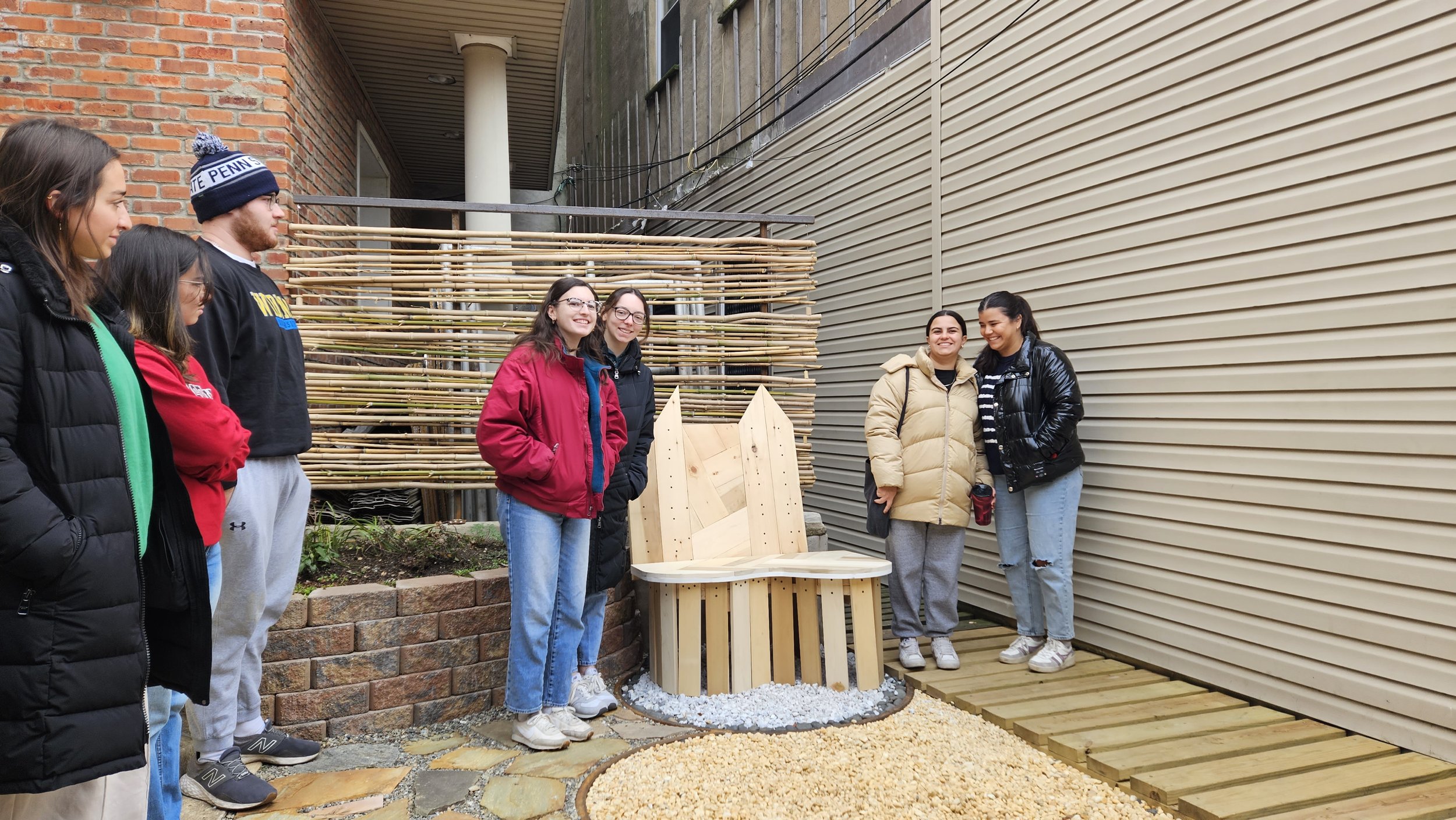Aqua Terrace
An ongoing in-ground sculptural installation DESIGNED BY NANCY AGATI
Designed to engage and educate the public about water absorption, runoff, and flooding within urban areas of Philadelphia
Nancy Agati’s Aqua Terrace, a permeable surface mosaic installation that both helps with flooding issues and reimagines a lovely backyard for Da Vinci Art Alliance, which was formerly, to put it delicately, a trash pile.
Agati has always been led to make work about water…
She is drawn to the movement, patterns, and the way light interacts with the surface of the water. She once did a piece for the Schuylkill Center, where she taught people how to carve the negative space around shapes she had drawn on wood. She said, “Because they were staying along the water’s edge and carving, they felt in unison with the water’s flow. That piece was about appreciating a body of water we live with all the time and maybe don’t pay attention to, and meditating by it, about the beauty of that.” A major thread in all of Agati’s work is how it puts the viewer and the artist herself, in relationship with her materials, and by extension, the world around them.
Aqua Terrace is an in-ground sculptural installation which uses oyster shells, asphalt, concrete, rock, stone, dirt to build out shallow, swirling patterns. I asked about her feeling drawn towards pattern and geometry across her work, and she referenced her Italian roots, the way Italian gardens are so ornate and tidy. She also said that over time she has become more appreciative of disorder, and likes to find that balance. In working on Aqua Terrace, Agati was met with a lot of constraints, the messy realities of a smaller space. “South Philly is tight. We walked buckets of everything we dug up through the alleyway. Mostly rubble, really. There were a lot of surprises there.”
This is not the first time Agati has made a permeable surface. Prior to this, she installed a piece in Atlantic City, called Water Table, which calls attention to rising sea levels in the region, and offers what Agati calls a mitigation strategy, if not a solution. I was curious about how she prioritized beauty and practicality in her work.
“[My pieces] aren’t always functional. I was thinking, is this really art? What part of it is an artwork? … The line between those things has blurred, more and more people are using gardens and plants and trees and natural materials, incorporating not only the materials, but the whole idea of horticulture and gardening and farming to work in an art context.”
For us at Da Vinci, flooding has been a real issue. It has ruined art supplies and equipment we store in our basement, obviously created water damage, and made it difficult to enjoy the outdoor space that came with our historic row home. Aqua Terrace is a welcome, hypnotic piece, the start of a dye garden, an art piece we can enjoy right as the months start to get brighter.
ON THE BENCHES…
Students in Saint Joseph’s University's "Sculpture and the Environment" class taught by Steve Rossi installed benches they collaboratively designed for the space.
Utilizing wood working skills and three-dimensional design principles, these site-specific considerations provided a starting point for students to explore how their project could complement and/or contrast the surrounding natural elements and built environment.
Benches created by: Carli Davy, Miranda Oseguera, Kelly Slater, Abby Williams, Ivy Allen, Alex Colman, Lauren Duncan, and Eva Hernandez


